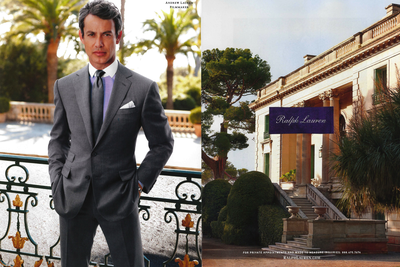 Consumers respond to brand-produced content
Consumers respond to brand-produced content
Although digital media is usurping more traditional forms, television, newspapers and out-of-home advertising still hold considerable sway, according to a report by the Shullman Research Center.
The "Reaching the Wealthy Consumer" report also looks into the engagement differences between consumers with a net-worth above $1 million and those below. Overall, the monthly pulse suggests that brands should continue to diversify their marketing strategy and continue to invest in traditional platforms.
"We keep hearing about the impending death of traditional media and this [data] suggests that depending on which segments you’re going after, traditional is still vibrant," said Bob Shullman, founder/CEO of the Shullman Research Center, New York.
"When you look at reach and effectiveness, digital is coming up and the wealthier people are using it, but some of the traditional media are still strong."
The information found in the “Reaching the Wealthy Consumer” report is based on the Shullman Luxury and Affluence Monthly Pulse Fall 2013 Preview Wave that was conducted online Aug. 20-27 among Unites States adults ages 18 or older.
A total of 1,013 completed interviews were obtained from five sample groups divided among four income brackets: $75,000 to $149,999, $150,000 to $249,999, $250,000 to $499,999 and $500,000 or more.
Reach vs. engagement
Fifty-eight percent of high-net-worth consumers responded that they had seen or heard advertising on television in the past 30 days, which accounted for the highest overall reach of any platform. Web sites, print magazines, mail, print newspapers and emails followed television in terms of reach.
 Ralph Lauren ad in April Robb Report
Facebook and Instagram had higher reach potential among consumers with a net-worth under $1 million.
Print newspapers were regarded by higher-net-worth consumers as the most engaging platform for ads, followed by digital newspapers, Twitter and medical offices.
For respondents with a net-worth below $1 million, tablets, digital newspapers, television and printed magazines were the most engaging platforms.
Ralph Lauren ad in April Robb Report
Facebook and Instagram had higher reach potential among consumers with a net-worth under $1 million.
Print newspapers were regarded by higher-net-worth consumers as the most engaging platform for ads, followed by digital newspapers, Twitter and medical offices.
For respondents with a net-worth below $1 million, tablets, digital newspapers, television and printed magazines were the most engaging platforms.
 Rolls-Royce tour
Interestingly, shopping malls were regarded as more engaging for the more affluent consumers.
Climbing to the top
A previous report urges marketers to make distinctions between high-income consumers and wealthy consumers.
While not all millionaires have a high annual income, the report argues that they should still be a primary focus for marketers. As the report splits up its survey base, different attitudes emerge that may be useful for marketers (see story).
Also,72 percent of ultra-affluent said that they buy based on quality and less on price, and 64 percent said that they seek out superior service when shopping. This study builds upon the Shullman Research Center’s last study by providing a closer look at Amazon from the consumer’s perspective (see story).
Fifty-nine percent of adults in the United States have made a purchase on Amazon in the past year, according to the survey.
The “Shullman Luxury and Affluence Monthly Pulse” survey suggests that the consumer shift toward Amazon is powered by the engines of competitive pricing and convenience. Although Amazon’s ascent, capabilities and penetration of the luxury market are nothing new, determining the size of jeopardized market share will help luxury brands find a common ground with the online retailer (see story).
"A lot of marketers are experimenting with a lot of different things, looking for the best solution," Mr. Shullman said. "It depends on who your customers are."
Final Take
Joe McCarthy, editorial assistant on Luxury Daily, New York
Rolls-Royce tour
Interestingly, shopping malls were regarded as more engaging for the more affluent consumers.
Climbing to the top
A previous report urges marketers to make distinctions between high-income consumers and wealthy consumers.
While not all millionaires have a high annual income, the report argues that they should still be a primary focus for marketers. As the report splits up its survey base, different attitudes emerge that may be useful for marketers (see story).
Also,72 percent of ultra-affluent said that they buy based on quality and less on price, and 64 percent said that they seek out superior service when shopping. This study builds upon the Shullman Research Center’s last study by providing a closer look at Amazon from the consumer’s perspective (see story).
Fifty-nine percent of adults in the United States have made a purchase on Amazon in the past year, according to the survey.
The “Shullman Luxury and Affluence Monthly Pulse” survey suggests that the consumer shift toward Amazon is powered by the engines of competitive pricing and convenience. Although Amazon’s ascent, capabilities and penetration of the luxury market are nothing new, determining the size of jeopardized market share will help luxury brands find a common ground with the online retailer (see story).
"A lot of marketers are experimenting with a lot of different things, looking for the best solution," Mr. Shullman said. "It depends on who your customers are."
Final Take
Joe McCarthy, editorial assistant on Luxury Daily, New York
